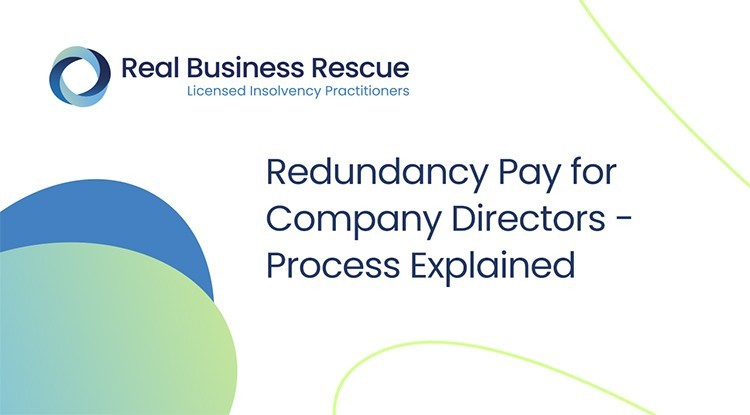Explained: If a Company Goes Bust Who Pays Redundancy in the UK?
Explained: If a Company Goes Bust Who Pays Redundancy in the UK?
Blog Article
Exploring the Operational Characteristics of Company Redundancy and Its Long-Term Sustainability

Redundancy Methods for Company Continuity
In order to guarantee uninterrupted procedures, services need to carry out reliable redundancy techniques for service connection. Redundancy in this context refers to the replication of important elements or functions within a system to minimize the influence of prospective failings. By incorporating redundancy methods, companies can enhance their strength versus disturbances brought on by different factors such as natural catastrophes, tools failures, or cyber-attacks.
One common redundancy technique is the implementation of backup systems and information storage space services. This entails creating duplicates of vital information and systems that can be activated in situation of a key system failing. Additionally, companies can develop redundant communication channels and source of power to preserve connectivity and operations throughout unforeseen occasions.
Moreover, cross-training workers to perform multiple functions within the firm can work as an important redundancy approach. If vital personnel are not available due to health problem or various other factors, this ensures that crucial tasks can still be carried out even. In general, effective redundancy techniques are crucial for businesses to support functional continuity and decrease the impact of possible interruptions.
Effect of Redundancy on Organizational Strength
Given the critical duty redundancy strategies play in ensuring organization continuity, discovering the impact of redundancy on organizational resilience comes to be vital for recognizing the all natural functional dynamics of a firm. Organizational durability refers to an entity's capability to adapt to disturbances, recover from obstacles, and transform when needed while keeping core features. Redundancy, when strategically implemented, can significantly add to boosting an organization's durability in the face of unexpected difficulties. By having backup systems, employees, or processes in position, business can better withstand shocks and proceed operations with marginal disruption.
Moreover, redundancy can boost worker spirits and self-confidence, knowing that there are backup strategies in position to deal with unforeseen conditions. This sense of protection can bring about raised productivity and a more favorable workplace. Furthermore, redundancy can promote development and imagination within a company as workers really feel encouraged to take computed dangers, understanding that there is a security net to support them in situation of failing. On the whole, the influence of redundancy on organizational resilience is extensive, shaping the long-term sustainability and success of a company.
Balancing Effectiveness and Adaptability in Redundancy
Accomplishing an unified equilibrium between operational effectiveness and flexible flexibility is a critical obstacle in the calculated deployment of redundancy within companies. Effective procedures are important for keeping efficiency and cost-effectiveness, making sure that sources are utilized optimally. However, too much focus on performance alone can lead to rigidity, making it challenging for companies to adjust to unanticipated adjustments or difficulties. On the other hand, flexibility allows organizations to respond nimbly to evolving circumstances, promoting development and strength. Yet, way too much adaptability without a solid operational foundation can lead to ineffectiveness and incongruity.
To stabilize performance and adaptability in redundancy planning, organizations must thoroughly evaluate their operational requirements, market characteristics, and calculated objectives. Executing lean methods can enhance effectiveness by getting rid of and streamlining processes waste, while cultivating a culture of adaptability and constant renovation can boost adaptability. Furthermore, spending in cross-training programs and durable communication networks can help grow a flexible workforce efficient in handling varied jobs throughout periods of change. Eventually, discovering the right stability in between effectiveness and versatility is important for building a durable and lasting organization in the face of unpredictability.
Long-Term Sustainability With Redundancy Planning
To make certain long-lasting stability and security, companies must tactically align their redundancy preparation More Bonuses with long-term sustainability goals, therefore harmonizing functional effectiveness with flexible flexibility. Lasting sustainability through redundancy planning includes greater than just temporary cost-cutting actions. It needs a thorough strategic technique that expects future difficulties and opportunities. Companies should view redundancy not as a responsive option to immediate problems however as an aggressive approach for long-term success. By incorporating redundancy preparation with sustainability goals, companies can produce a durable framework that can endure numerous market changes and inner adjustments.

Proactive Procedures for Lasting Firm Operations
Exactly how can companies proactively enhance their functional sustainability for lasting success? Executing proactive measures is important for firms intending to make certain sustainable operations. One vital approach is to purchase innovation and advancement to streamline procedures, decrease waste, and remain competitive in site web the marketplace. Taking on sustainable practices such as reducing energy intake, reducing carbon footprint, and optimizing source use can not just benefit the environment but additionally lead to cost savings in the future.
In addition, cultivating a society of constant renovation and discovering within the company can enhance adaptability to changing market conditions and consumer demands. Urging staff member involvement in decision-making procedures and giving opportunities for expert development can increase spirits, performance, and total performance. Developing clear goals, checking vital efficiency indicators, and regularly examining development are crucial elements of proactive sustainability administration.
Collaborating with providers, clients, and other stakeholders to advertise sustainable methods throughout the supply chain can produce a surge impact of positive effect - redundancy pay if company goes bust. By taking aggressive actions towards operational sustainability, companies can develop durability, drive technology, and safeguard their long-lasting success in an ever-evolving service landscape
Conclusion

In the world of business administration, the critical release of company redundancy stands as moved here a critical yet elaborate practice that necessitates a delicate equilibrium between operational performance and long-term practicality. By exploring the operational dynamics that underpin company redundancy and reviewing its more comprehensive ramifications for organizational strength and versatility, a nuanced understanding of just how redundancy strategies can form the future trajectory of a firm begins to unfold.Offered the crucial function redundancy approaches play in making sure service connection, discovering the impact of redundancy on organizational durability ends up being important for recognizing the all natural operational characteristics of a firm. In general, the effect of redundancy on organizational resilience is extensive, shaping the lasting sustainability and success of a firm.
In conclusion, comprehending the operational characteristics of company redundancy is essential for making certain lasting sustainability.
Report this page